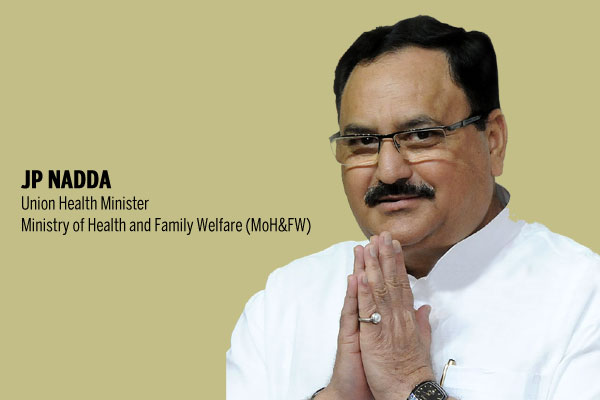A visionary decision strengthening medical sector in the country, and big step towards Ayushman Bharat: J P Nadda
Hailing the decisions taken by the Cabinet chaired by Prime Minister Narendra Modi regarding the proposal for continuation and taking up additional phases of Human Resources for Health and Medical Education schemes, Union Minister of Health & Family Welfare JP Nadda said that Sarve Bhavantu Sukhinah, Sarve Santu Niramayah (‘सर्वे भवन्तु सुखिनः,सर्वे सन्तु निरामयाः) is the guiding principal of the government. The government has announced as a part of ‘Ayushman Bharat’ two path breaking initiatives that address health holistically, impacting primary, secondary and tertiary care system as well as prevention and health promotion. The 1.5 lakh health and wellness centres, announced in the Budget, will provide people-centric comprehensive primary healthcare including for common non-communicable diseases closer to the homes of people including providing free essential drugs and diagnostics. The second initiative under ‘Ayushman Bharat’ is National Health Protection Scheme, under which over 10 crore poor and vulnerable families (approx 50 crore beneficiaries) will be provided treatment coverage up to Rs 5 lakh per family per year for secondary and tertiary care hospitalisation.
Nadda stated that the government is consciously working towards improving health infrastructure as well as health manpower in the country. To improve the health infrastructure in the country this government has announced establishment of 13 new AIIMS as well as has approved setting up of super-speciality facilities at 15 existing government medical colleges, Nadda added. Continuing the focus on creation of health care infrastructure, the government gave approval to continuation of ongoing scheme to establish 58 new medical colleges attached with existing district/referral hospitals. Of this, eight medical colleges have already started functioning in last three years, while the remaining 50 would be made functional by 2019-20.
The Cabinet also gave approval for establishment of 24 additional government medical colleges attached with existing district/referral hospitals by 2021-22, in the identified underserved areas in the country. In addition, the Cabinet approved continuation and completion of scheme for setting up of 112 Auxiliary Nursing and Midwifery Schools (ANM) and 136 General Nursing Midwifery (GNM) schools by 2019-20 in the underserved areas of the country.
To increase the availability of qualified doctors, the Cabinet also gave approval for increase of 10,000 MBBS seats by 2020-21 and 8058 PG seats by 2020-21. Besides, the scheme on establishment of new medical colleges (58+24) would lead to addition of another 8200 MBBS seats in the country. The proactive steps taken by the government to increase the number of qualified doctors in the country, has already added nearly 13,000 MBBS seats and 7,000 PG medical since 2014-15. With approval of 24 new government medical colleges, the government has ensured setting up of at least one medical college for every three Parliamentary Constituencies and at least one government medical college in every state of the country.
For the schemes approved to increase the availability of health care infrastructure and manpower, Cabinet sanctioned for expenditure of Rs 14,930.92 crore as Central share during the 14th Finance Commission period i.e. up to 2019-20. The balance Central share of Rs. 5,658 crore will be released after 2019-20.
The Cabinet decision aims to create additional manpower especially focussing on increasing government seats in the under-served or un-served areas to make medical education more affordable for general public, bridge the provider-patient ratio to attain Sustainable Development Goals and meet WHO standards.
The establishment of new medical colleges and increase of MBBS seats and PG seats will lead to increase in the availability of qualified health professionals, improve tertiary care in government sector, utilise existing infrastructure of districts hospitals and promote affordable medical education in the country.
- Advertisement -



Comments are closed.